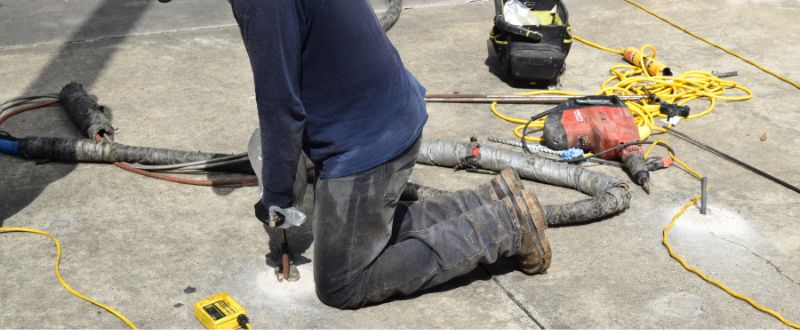Traditional foundation repair methods often fail over time due to erosion, soil instability, and water damage. These forces compromise the integrity of the repair material or the load-bearing soil. Polyjacking, also called foam jacking, is a repair method that uses polyurethane foam to lift and stabilize concrete. Explore the characteristics of polyurethane foam for foundation repair to understand what makes polyjacking a resilient solution.
Expansion
Polyurethane foam is an expanding material, which means that when a technician injects it into the ground, the foam expands while seeking the path of least resistance. This expansion allows the foam to cover a larger area and reach irregular spaces like soil fissures that other materials may not fill. Furthermore, as the foam expands, it exerts an upward force that can help lift and stabilize a sinking or settling foundation, making it an effective solution for various foundation issues.
Polyjacking is a non-invasive, permanent repair solution, and the expanding foam mitigates the need for excavation. Instead, the technician injects the foam into the subsurface soil through penny-sized holes, reducing the risk of property damage and lowering repair costs.
Durability
Polyjacking repairs can last for 20 years or longer, thanks to the polyurethane foam’s durability. Closed-cell polyurethane foam is distinguished by its dense, compact structure, where the cell walls of the foam are completely closed. This configuration makes the foam much more rigid and stable compared to open-cell types, giving it superior strength and durability.
Another characteristic that makes URETEK’s polyurethane foam durable is its hydro-insensitivity. This means that water will not compromise the foam’s physical structure, making it an excellent solution for longstanding foundation repair.
Fast Cure Time
One of the biggest benefits of polyurethane foam void filling is that it takes a fraction of the time of other repair methods. After injection, URETEK’s foam reaches 90 percent of its cured strength within 15 minutes. This expeditious process minimizes downtime and allows for almost immediate reuse of affected areas, which is an unparalleled advantage in both residential and commercial settings.
Because operations can resume swiftly, businesses do not face costly and inconvenient disruptions. For homeowners, fast curing minimizes disturbances associated with traditional foundation repair.
Light Weight
Compressed soil underneath a concrete slab can lead to uneven settling and structural instability. The chemical reaction that causes the polyurethane foam to expand also leaves air trapped in the foam, making it significantly lighter than traditional fill materials. This reduced weight places less stress on the underlying soil, helping to mitigate further settling while reducing the likelihood of future foundation issues.
Its light weight does not make polyurethane foam any less structurally sound. The foam’s closed-cell structure provides substantial resistance against compression and environmental factors. This unique combination allows it to support substantial loads without contributing to further soil compaction or degradation.
Polyurethane foam’s expansion, durability, fast cure time, and light weight make foam jacking a robust solution for foundation repair. These characteristics deliver an optimal balance of performance, longevity, and efficiency, making it a preferred foundation repair option for property owners. Call URETEK ICR Gulf Coast today for a consultation on polyurethane void filling for your home or business.

